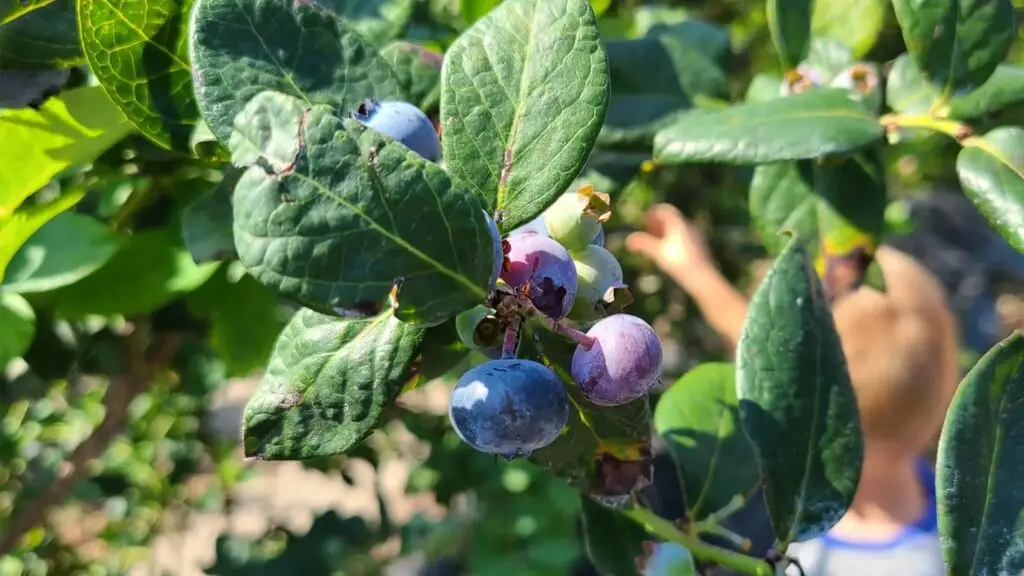One of my children’s favorite activities is to visit a farm and pick their own fresh fruit.
They have spent many hours walking through rows of blueberry bushes or strawberry plants, carefully and thoughtfully finding the best specimens to drop into their buckets (or into their mouths).
What my children don’t yet fully appreciate—and what most of us probably don’t either—is how much happened to lead to that little berry being harvested by eager little hands. A seed was planted in the dirt (by a human, by an animal, by the wind, or by gravity), and from that seed emerged a tiny sprout that found its way above the dirt. As the little plant grew, it needed to somehow evade threats from hungry bugs and birds, harsh weather, and other plants competing for its precious nutrients. As it kept reaching for the sky, it needed the sky to send it a continual supply of water and light. By a process that a child would be tempted to label as miraculous, water and light and air are turned into sustenance for this growing plant.
National Geographic describes the process this way:
“During photosynthesis, plants take in carbon dioxide (CO2) and water (H2O) from the air and soil. Within the plant cell, the water is oxidized, meaning it loses electrons, while the carbon dioxide is reduced, meaning it gains electrons. This transforms the water into oxygen and the carbon dioxide into glucose. The plant then releases the oxygen back into the air, and stores energy within the glucose molecules.”
If you think that still sounds miraculous, I’d say you are not far off. It might not have seemed that way when you learned about it in high school biology class, but this is a profoundly complex series of events that is happening all around us all the time.
It gets even more remarkable when colorful blossoms start popping out all over our little plant. We could (and may) spend a whole blog post talking about the extravagant and often surprising beauty of flowers, but for now, the focus is their more functional purpose as a staging ground for the grand finale. And it is a team effort. These flowers hold essential particles that need to be traded with other flowers so they all can accomplish their full purpose. For that to happen, the particles need to be successfully transported by bees or butterflies or other creatures or the wind.
Finally, with one more burst of wonder, the flowers morph into something delicious and life-sustaining. Not only that, but they have also generated new seeds so that the wonders can keep coming.
The point of all this is not a rudimentary botany lesson, but it is about how the most mundane and “natural” things around us contain a staggering amount of beauty and order and complexity. At least, it should be staggering. The blueberry my son plucked off that bush got there by a means that we cannot fully understand and that we cannot at all control. Yes, we can scientifically describe the life cycle of a plant; and yes, a farmer can predict how certain techniques will lead to a thriving crop. But they can’t cause the rain to pour, they can’t cause the sun to shine, and they can’t force a seed to sprout.
Jesus asserted the same: He described a man planting seeds who “sleeps and rises night and day, and the seed sprouts and grows; he knows not how. The earth produces by itself, first the blade, then the ear, then the full grain in the ear” (Mark 4:27-28).
Though He was referencing this incredible process of seed-becoming-plant-becoming-food, the Lord was really talking about something even more profound: “The kingdom of God is as if a man should scatter seed on the ground” (Mark 4:26, emphasis added).
This is hardly the only time in the Bible that seeds and plants and fruit are used as spiritual metaphors. Just a few verses earlier in Mark 4 is the famous parable of the seeds and the sower. Jesus reveals specifically that the seed there represents the Word of God being “planted” into a heart. The “soil” of that heart determines whether the seed will grow and bear fruit.
In Galatians 6, the apostle Paul shows that the seeds of our thoughts and actions will “reap” a corresponding harvest—“For the one who sows to his own flesh will from the flesh reap corruption, but the one who sows to the Spirit will from the Spirit reap eternal life” (6:8). In the chapter just before that, he describes the harvest that comes in the form of the “works of the flesh” or the “fruit of the Spirit” (5:19-23).
And in John 15, Jesus describes Himself as the life-giving vine that sustains and upholds the fruit-bearing branches.
All of these parallels lead us to the same conclusion, which is that our own spiritual growth happens by the same power that brings a seed out of the ground and gives it beauty and usefulness. Just as we are dependent on the hand of the Creator to cause a seed to sprout, to bring rain and sun, to draw out a flower, and to turn it into something that will nourish and sustain our bodies, we need Him to plant the seed of truth within us and cause it to transform us.
Our own spiritual growth happens by the same power that brings a seed out of the ground and gives it beauty and usefulness. Share on XThis is no less miraculous than the culmination of a blueberry fruit, for as the parable of the Lord makes clear, the world is filled with birds and rocks and weeds that seek to thwart us at every step of our walk. Just as a seedling can be prevented from bearing fruit by natural forces working against it, our pursuit of God and His righteousness are under constant attack by sin, by culture, and by the wicked prince of this world. It can seem much easier to sow to the flesh than to the Spirit.
But Christ is the light we need to grow (John 1:9). He is the water (John 14:13). And He is the very vine that we cling to and abide in for strength, protection, and life.
So the next time you take a bite into a strawberry or apple or blueberry, maybe take a moment to let your mind be blown away by the intricate process involved. And thank God for His glorious provision.
It is astounding to think about how God has filled the earth with edible, sweet, delicious fruit, each one coming from a tiny seed and an unimaginably complex and fine-tuned process. It is even more astounding to think about how He turns sinners into His children.


